Moment's Notice
Reviews of Recent Recordings
(continued)
Iro Haarla Sextet
Kolibri
Tum CD 035
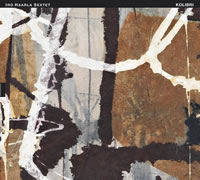 The intents and purposes of pianist Iro Haarla’s music have always been plain-spoken if not self-evident, even though they regularly address the murkiest depths and most inexplicable workings of the human heart. Often, this registers as melancholy, which irreverent Finns suggest is something of a national pastime. It’s an easy conclusion to reach, given her ability to pen slowly churning melodies that ultimately slip into the ether. But, a statement included in her booklet note for the debut of her new sextet makes the sharpest point yet about her sensibility: “Through cutting beauty, I try to awaken the most fundamental emotions in the listeners – almost as if issuing a challenge to them to give ever more love to each other and to help each other in receiving it.”
The intents and purposes of pianist Iro Haarla’s music have always been plain-spoken if not self-evident, even though they regularly address the murkiest depths and most inexplicable workings of the human heart. Often, this registers as melancholy, which irreverent Finns suggest is something of a national pastime. It’s an easy conclusion to reach, given her ability to pen slowly churning melodies that ultimately slip into the ether. But, a statement included in her booklet note for the debut of her new sextet makes the sharpest point yet about her sensibility: “Through cutting beauty, I try to awaken the most fundamental emotions in the listeners – almost as if issuing a challenge to them to give ever more love to each other and to help each other in receiving it.”
Kolibri is challenging on several counts. More so than the quintet with which she records for ECM, this new unit delves deeper into less commented-upon aspects of Haarla’s music. Compositions like “Processional” tap the elemental power first articulated in her scores for Edward Vesala’s Sound and Fury, while “Spirit Bear,” which features Haarla’s chen (a Taiwanese cousin of the koto), revisits the mythos-infused soundscapes the drummer’s ensembles conjured. Additionally, there is the against-type “Legend of Cranes,” which juxtaposes a brawny, heraldic theme and a sprinting, robust swing feel – borderline startling given her glacial tempi can make Tord Gustavsen’s seem manic.
Haarla’s Sextet is a mix of Sound and Fury veterans – the Polaris-like Ulf Krokfors, one of the truly under-heralded bassists on the planet, and trombonist Jari Hongisto – and three seasoned journeymen: drummer Markku Ounaskari, saxophonist/flutist Kari Heinilä, and trumpeter Verneri Pohjola. Hongisto is the kind of trombonist who adds disproportionate heft to a two-horn front line; he’s got the pure sound for Haarla’s more wistful themes, a wide array of timbres that can evoke fragile beauty or the long, cold, black night, and the requisite power for Sound and Fury-like fulminations. Both Heinilä and Pohjola exemplify the combination of impeccable technique, sturdy solo construction and finely gauged emotional projection that is pervasive among conservatory-educated Finns, their skill sets comparing well to their counterparts in Haarla’s quintet – Trygve Seim and Mathias Eick. The real cleaving difference of Haarla’s Sextet, however, is Ounaskari; not only can he offset Haarla’s more Bleyish solos with precisely spattered colors, but he can rile the band with flashes of power, as well.
“Nightjar” and “Vesper” (the latter reprised from her most recent ECM disc) bookend the album with classic Haarla heartstring-pulling lyricism. While the bulk of the album gives a full picture of Haarla as composer and improviser, her renown is still largely – and arguably disproportionately – based on compositions like these; little wonder, given their beauty.
–Bill Shoemaker
Mary Halvorson Septet
Illusionary Sea
Firehouse 12 FH12-04-01-017
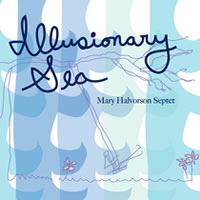 Illusionary Sea is the studio debut of Mary Halvorson’s Septet, an augmented version of her Quintet which is in turn an extension of her original Trio. In addition to partaking in numerous collaborative projects with her fellow Brooklyn-based peers, the guitarist has diligently maintained her flagship trio with bassist John Hébert and drummer Ches Smith since their 2008 release Dragon’s Head (Firehouse 12), Halvorson’s premier recording as a band leader. A year later, she recruited saxophonist Jon Irabagon and trumpeter Jonathan Finlayson to bolster the lineup to a quintet. The Septet subsequently adds tenor saxophonist Ingrid Laubrock and trombonist Jacob Garchik to the frontline; the extra horns confer an even wider spectrum of tone color to Halvorson’s multifaceted compositions, whose increasingly engaging themes reflect a burgeoning growth.
Illusionary Sea is the studio debut of Mary Halvorson’s Septet, an augmented version of her Quintet which is in turn an extension of her original Trio. In addition to partaking in numerous collaborative projects with her fellow Brooklyn-based peers, the guitarist has diligently maintained her flagship trio with bassist John Hébert and drummer Ches Smith since their 2008 release Dragon’s Head (Firehouse 12), Halvorson’s premier recording as a band leader. A year later, she recruited saxophonist Jon Irabagon and trumpeter Jonathan Finlayson to bolster the lineup to a quintet. The Septet subsequently adds tenor saxophonist Ingrid Laubrock and trombonist Jacob Garchik to the frontline; the extra horns confer an even wider spectrum of tone color to Halvorson’s multifaceted compositions, whose increasingly engaging themes reflect a burgeoning growth.
Although her writing has matured remarkably over the past few years, Halvorson has been most widely praised for her singular instrumental technique. Besides conjuring bracing textural shifts that vary from precisely executed arpeggios to feedback-laced tone clusters, her most noteworthy innovation is the imaginative use of a variable speed delay unit to control pitch and tone – revealed in prismatic cascades of bent notes that evoke rivulets of spun molten glass – a distinctive sound all her own.
2012’s Bending Bridges (Firehouse 12) subtly built upon the modular structures featured on Saturn Sings (Firehouse 12, 2010), the Quintet’s first record. Illusionary Sea reveals a more sophisticated approach, its arcing motifs and multihued layers evincing a stronger balance between pre-written and improvised elements. Halvorson’s compositional acumen is the session’s most significant feature; underscored by memorable melodies and rich contrapuntal horn charts, the album’s seven elaborate pieces espouse a unified sound world, bolstered by the adventurous extrapolations of her sidemen, whose keen interpretations are well-suited to the leader’s urbane aesthetic.
Halvorson’s detailed arrangements largely determine the stylistic outcome of each soloist’s excursions, although Irabagon and Laubrock’s irrepressible natures inevitably materialize on the anthemic “Smiles of Great Men.” Their mercurial sensibilities circumvent convention elsewhere as well; Irabagon’s fitful declarations on the spirited “Butterfly Orbit” and Laubrock’s full-throated assertions on the tautly syncopated “Four Pages of Robots” are similarly capricious. Finlayson and Garchik comply in equally expressive fashion; the clarion trumpet cadences that introduce “Fourth Dimensional Confession” are as vocally animated as the trombonist’s plangent ruminations on the lushly orchestrated title track. Veterans of Halvorson’s various bands, Hébert and Smith confirm themselves as the leader’s most sympathetic collaborators, their adroit interchanges providing spontaneous verve to endlessly shifting tempos and time signatures.
With the majority of the session’s improvisations allotted to her sidemen, Halvorson magnanimously assumes the role of bandleader in this setting, soloing briefly but effectively, with pithy statements that reinforce a variety of moods. Her crystalline fretwork on “Fourth Dimensional Confession” underscores the work’s opulent coda, while the serrated cadences that close the feisty “Butterfly Orbit” modulate from phase-shifting fusillades to pointillist fragments, complementing the proceedings in turn.
No longer needing to prove her mettle with endless extended guitar solos, Illusionary Sea finds Halvorson focusing her attention on crafting multi-faceted pieces that highlight her talents as a composer. Appropriately, the album ends with a moving arrangement of Phillip Catherine’s “Nairam,” which was recorded under the title “Maryan” on Robert Wyatt’s Shleep (Thirsty Ear, 1997) – the first cover included on any of Halvorson’s releases as a leader. Concluding the date on a high note, the song’s spiraling, harmonious melody fits seamlessly alongside Halvorson’s intricate tunes, its straightforward lyricism suggesting another potential avenue for future exploration.
–Troy Collins
Pandelis Karayorgis Trio
Cocoon
Driff Records CD1302
Pandelis Karayorgis Quintet
Circuitous
Driff Records CD1304
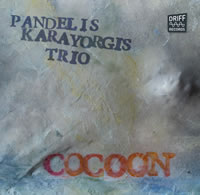
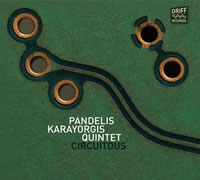 Earlier this year, following in the footsteps of many of his contemporaries, pianist Pandelis Karayorgis co-founded the Boston-based label Driff Records with multi-instrumentalist Jorrit Dijkstra, in an effort to independently document his own work. Two of the imprint’s most recent releases feature Karayorgis leading fairly conventional groups. Cocoon presents the adventurous keyboardist in a traditional acoustic piano trio setting accompanied by fellow Beantown associates bassist Jef Charland and drummer Luther Gray, while the quintet effort Circuitous highlights Karayorgis’ longstanding connection to the Chicago jazz scene.
Earlier this year, following in the footsteps of many of his contemporaries, pianist Pandelis Karayorgis co-founded the Boston-based label Driff Records with multi-instrumentalist Jorrit Dijkstra, in an effort to independently document his own work. Two of the imprint’s most recent releases feature Karayorgis leading fairly conventional groups. Cocoon presents the adventurous keyboardist in a traditional acoustic piano trio setting accompanied by fellow Beantown associates bassist Jef Charland and drummer Luther Gray, while the quintet effort Circuitous highlights Karayorgis’ longstanding connection to the Chicago jazz scene.
A former student of Paul Bley, Karayorgis’ pianism suggests a multitude of post-war influences, ranging from the kinetic dissonances of Cecil Taylor and the thorny counterpoint of Lennie Tristano to the oblique lyricism of Thelonious Monk and the harmonic ingenuity of Andrew Hill. These manifold aspects of his artistry come to the fore in the intimate confines of Cocoon, where he and his trio mates navigate a variety of asymmetrical melodies and odd meters with aplomb. They display tuneful restraint in their subdued renditions of bluesy ballads like “Sideways Glance” and “Red,” simultaneously negotiating the Monkish swagger of “You Took My Coffee And Left” and the jagged angles of “Idiosynchronicity” with graceful élan.
Charland and Gray’s malleable sense of timekeeping seamlessly integrates quasi-rubato pulses, hypnotic ostinatos and intuitive call and response into their affable interplay. They effortlessly transition between abstract musings and driving swing, attentively underpinning Karayorgis’ circuitous cadences, which veer from the pellucid filigrees of the pensive title track to the hammered arpeggios of the blistering opus “Settling.” Subtly recalling past antecedents in their vanguard reinterpretations of classic piano trio tenets, Karayorgis’ longstanding partnership with Charland and Gray has merited widespread critical acclaim; Cocoon is a certifiable document of their enduring, congenial rapport.
Karayorgis shares a similar affinity with the Windy City rhythm section of bassist Nate McBride and drummer Frank Rosaly on Circuitous, which also features the frontline of two bold Chi-town multi-reedists: Dave Rempis and Keefe Jackson. No stranger to the Chicago scene, Karayorgis spent ample time there in the 1990s, working with, among others, Ken Vandermark and Guillermo Gregorio (the pianist and clarinetist collaborate with trombonist Steve Swell on another new Driff Records release, Window and Doorway). In reference to the ensemble’s dual saxophone configuration, Karayorgis explains in the liner notes that Anthony Williams’ seminal album Spring (Blue Note, 1966) inspired the instrumentation for this project – yet it reaches far beyond the structural advancements of that iconic session, both in terms of dynamics and intensity.
Throughout the date, the quintet crafts beguiling narratives from Karayorgis’ labyrinthine compositions, with the five band members often arranged into unusual instrumental sub-groupings that eschew standardized conventions. Together McBride and Rosaly deconstruct in-the-pocket grooves with impulsive fervor, spurring the leader into a frenzy of rhapsodic crescendos as the impeccably matched duo of Rempis and Jackson channel blues-based motifs and taut intervallic themes into trenchant testimonials.
“Vortex” is a telling example of the group’s dynamic prowess. Conceived around a tortuous line, the thorny number spotlights Karayorgis’ rambunctious opening gambit and a rancorous duet between Rempis’ baritone saxophone and Jackson’s contrabass clarinet that traverses a spectrum of tonal extremes. The punchy opener “Undertow” is equally ardent, spotlighting a rollicking series of freewheeling interludes from each musician, whereas the following “Nudge” regales with bluesy expressionism, its indigo hues emphasized by a succession of ruminative detours. Encompassing a variety of moods, the aptly titled “Swarm” evokes its namesake, as does the meandering title track, which showcases the quintet’s introspective tendencies.
Karayorgis’ Chicago quintet offers an intriguing alternative to his Boston-based ensemble, System Of 5, which features the rhythm section of Charland and Gray joined by saxophonist Matt Langley and trombonist Jeff Galindo. Similar, but distinct from its East Coast counterpart, the lineup documented on Circuitous explores territory consistent with Karayorgis’ oeuvre, which demonstrates a masterful reinvention of post-bop vernacular, expertly balancing the accessibility of the mainstream with the vitalizing freedom of the avant-garde.
–Troy Collins
Giuseppi Logan
More
ESP-Disk 1013
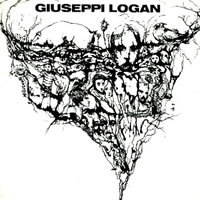 2013 marks the 50th anniversary of the founding of ESP-Disk and the label is marking the event with reissues of some of their most significant artists, including works by Albert Ayler and Paul Bley. The very first batch of ESPs included one of the most original artists of the free jazz movement, though his discography wouldn’t be extensive: Giuseppi Logan. That first release – The Giuseppi Logan Quartet – has long been available on CD, and it’s extraordinary work. On it, Logan switched from instrument to instrument, including a shehnai as well as single reeds, and his harsh, pinched sounds and bent pitches contributed to some of the most corrosive music ever heard on record. Logan, by accident or design, did as much to break up the rhetorical formations of jazz as any of his contemporaries. Now ESP has reissued Logan’s second LP for the label, More, with literally more material restored to the sessions. Few musicians’ work could more fully embody the psychic stresses of the times than Logan’s, and the stresses proved inseparable from his career: Logan disappeared for four decades, only to be found playing in Tompkins Square Park in 2008 by a conscientious evangelist.
2013 marks the 50th anniversary of the founding of ESP-Disk and the label is marking the event with reissues of some of their most significant artists, including works by Albert Ayler and Paul Bley. The very first batch of ESPs included one of the most original artists of the free jazz movement, though his discography wouldn’t be extensive: Giuseppi Logan. That first release – The Giuseppi Logan Quartet – has long been available on CD, and it’s extraordinary work. On it, Logan switched from instrument to instrument, including a shehnai as well as single reeds, and his harsh, pinched sounds and bent pitches contributed to some of the most corrosive music ever heard on record. Logan, by accident or design, did as much to break up the rhetorical formations of jazz as any of his contemporaries. Now ESP has reissued Logan’s second LP for the label, More, with literally more material restored to the sessions. Few musicians’ work could more fully embody the psychic stresses of the times than Logan’s, and the stresses proved inseparable from his career: Logan disappeared for four decades, only to be found playing in Tompkins Square Park in 2008 by a conscientious evangelist.
Logan’s More comes from two occasions in May 1965. The first two pieces are from the label’s May Day concert at which Ayler’s Bells was recorded. The new edition of More restores ten previously unreleased minutes to “Shebar,” producing a 19-minute piece of sustained interest. There’s nothing to suggest premeditation: Logan’s introductory yawps and sputters and sudden bursts of notes on bass clarinet, or his later flute interludes, don’t suggest composition, and his rhythms seem provisional – both radical steps in 1965. Logan had succeeded in assembling the most innovative rhythm section of the day, with liberated polyrhythms and a crazy-quilt of splattered clusters generated by drummer Milford Graves and pianist Don Pullen, the group’s outstanding soloist. The bassist on the May Day material is Reggie Johnson, an adept if relatively conventional musician.
Logan is most potent on the studio piece “Wretched Saturday:” he’s playing alto saxophone with that trademark acidic lyricism and the bassist is Eddie Gomez, the quartet’s original bassist and as significant a contributor to the band’s special quality as Logan, Graves or Pullen. Gomez contributes rapid-fire bursts of notes that seem to bounce off Graves’ slack-skin drum sound and intermingle with Pullen’s percussive flights and Logan’s vocalic utterance. On the unaccompanied piano solo “Curve Eleven,” Logan’s stream of consciousness conception is presented in keyboard form, runs up and down the keyboard that dance percussively or float on a sea of sustain pedal, sudden bluesy interludes, dissonant chordings, and passages that momentarily resemble the modality of Ravel.
–Stuart Broomer
Melodic Art-Tet
Melodic Art-Tet
NoBusiness NBCD 56
 This music travels a long way to speak to us. Exactly a month after these recordings were made at WKCR in New York City, another message was sent from a rather more high-tech installation in Puerto Rico. On November 16, 1974, the refurbished and reconfigured Arecibo Radio Telescope (see Contact, X Files and even GoldenEye) aimed a signal at a globular cluster some 25,000 light years away. The so-called Arecibo Message contained all the usual stuff and all the usual assumptions: that aliens would read binary code, that they would decipher the nucleotides of DNA and recognise the shape in the middle as the dominant life-form on the third blob out from a minor star; that they would give the remotest bugger to a scrawled message in a bottle that had come in on the cosmic tide.
This music travels a long way to speak to us. Exactly a month after these recordings were made at WKCR in New York City, another message was sent from a rather more high-tech installation in Puerto Rico. On November 16, 1974, the refurbished and reconfigured Arecibo Radio Telescope (see Contact, X Files and even GoldenEye) aimed a signal at a globular cluster some 25,000 light years away. The so-called Arecibo Message contained all the usual stuff and all the usual assumptions: that aliens would read binary code, that they would decipher the nucleotides of DNA and recognise the shape in the middle as the dominant life-form on the third blob out from a minor star; that they would give the remotest bugger to a scrawled message in a bottle that had come in on the cosmic tide.
The Arecibo Message won’t get to its destination for another 25,000 years, so here’s another missive from the past to be going on with. It works in a remarkably similar way. Strong binary melodies, elemental rhythms, all the root sugars and enzymes that go to the making of jazz and a survivalist urgency. “Here’s where we are and what we look like and do,” it seems to say, but stops short of calling out for help. There’s no sense in the Melodic Art-Tet’s music that it was intended as an emergency beacon; just a bulletin from a particular moment in the evolution of a music species that was existing marginally in a Zone outside the main metropolitan culture of New York. Those of us who weren’t there can only sense its geography from a street plan that isn’t color-coded (in any sense) and whose proximities are strikingly misleading. South of Houston is hardly a meaningful location in cosmic terms, but it means a great deal to those who inhabited it.
The Melodic Art-Tet consisted of drummer Roger Blank, bassist Ronnie Boykins, who was replaced by William Parker before this recording, trumpeter Ahmed Abdullah and saxophonist and composer Charles Brackeen. The October 15, 1974 line up was completed by percussionist Tony Waters (Ramadan Mumeen). The two horn men were part of the small circle of outsiders and revenants who recorded for the Swedish Silkheart label in the later 1980s but who spent much of the previous ten years in eclipse, so almost anything by them is of historical interest and value. Almost everything here comes from Brackeen, whose declamatory style has something of Albert Ayler about it, and something of Ornette Coleman (whose Artist House on Prince St. was an occasional berth for these guys), but the general tenor of the music – and this is the thing that clinches all that geeky space stuff – unmistakably recalls the Arkestra, which is where Abdullah and Boykins had both cut some teeth.
There’s an air of processional about the music. It seems to move through the speakers, slowing, fading, suddenly loudening through a gap in the urban architecture, suddenly changing subject and direction. Many of the pieces consist of short tattoos, or fanfares, repeated with an eldritch urgency. Abdullah’s Louis Armstrong-influenced trumpet has a strongly melodic quality, but it’s drier and more latter-day than the source. Brackeen, another remarkable musician to come out of Oklahoma, has that strange ability to suggest that his tone is about to lose all coherence and break down, like a speaker who has shouted himself hoarse but is holding it together because he has a story he must finish. One doesn’t notice the usual alternation of theme statement of soloing. Much like Sun Ra’s music, it seems to orbit round its own centre, a globular cluster of elements held by a common gravity and an extraordinary mass, out of proportion to the actual composition.
Themes bleed into one another in long collage-like sections. Brackeen’s holy holy titles and audible militancy are again tilted more toward Ayler than Coltrane and there’s a dark joy to the closing “Redemption/Consecration” sequence. An almost-calypso surfaces in the section headed by Abdullah’s “Time and Money” (his only contribution as composer) and there’s something of that form’s no-mercy flyting in the exchanges between horns, bass and percussion. As the group title suggests without irony, melody is the basic fuel here, easily singable or chantable themes that communicate across the infolded space-time that separates us as utterly from 1974 as it does from nebula M13. They have to wait another 25 millennia before word from Earth gets to them. We’re lucky. Thanks to the efforts of NoBusiness and Ed Hazell, this remarkable music resounds clearly out of the past.
–Brian Morton